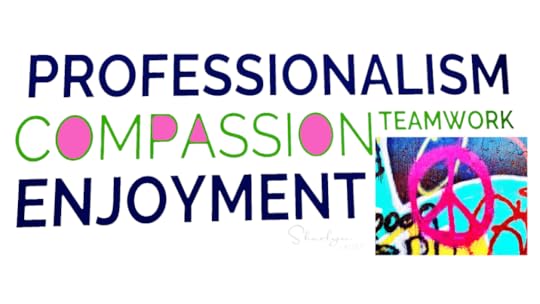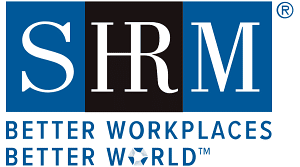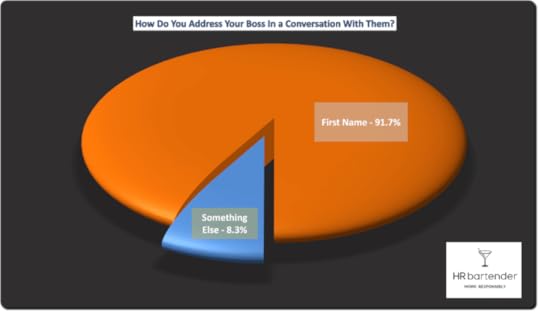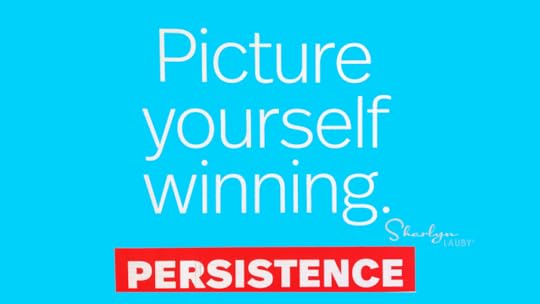Sharlyn J. Lauby's Blog, page 41
March 26, 2023
Employers: Pay Transparency Might Apply to Your Current Employees

Estimated reading time: 9 minutes
By now, I’d like to think that most organizations know about the wave of pay transparency laws that are being enacted around the United States. As of this article, eight states (CA, CO, CT, MD, NV, NY, RI, and WA) have some form of salary transparency legislation. In addition, six cities including Cincinnati, Jersey City, and New York City have adopted wage transparency laws.
But recently, I read an article in the Foley & Lardner LLP newsletter that caught my attention. It was about pay transparency laws applying to current employees. So, I reached out to our friends at Foley and asked if they would share their knowledge.
Michael Ryan is a labor and employment senior counsel in Foley’s Houston office. His practice includes unfair competition and trade secret laws, non-competition agreements, classification of employees and other wage and hour matters.
As always, please remember that Michael’s comments shouldn’t be construed as legal advice or as pertaining to any specific factual situations. If you have detailed pay-related questions, they should be addressed directly with your friendly neighborhood labor and employment attorney.
Michael, thanks so much for being here. Before we start talking about employee pay transparency, let’s discuss something that often comes up in pay-related conversations, which is employees talking about how much they make. Some employers are very opposed to employees talking about their pay. Is it legal for employees to talk about their salary?
[Ryan] Yes, regular (non-supervisory) employees can absolutely discuss their salary with other employees.

It is true that many employers take the position, for various reasons, that employee compensation is confidential and should not be discussed in the workplace, but it is actually illegal to have a blanket policy prohibiting such discussions. The National Labor Relations Board (NLRB) views employee discussion of their wages as a fundamental employee right protected by Section 7 of the National Labor Relations Act, which permits non-supervisory employees to ‘engage in other concerted activities’ for their ‘mutual aid or protection’. So, if an employer has a general policy prohibiting discussions of wages in the workplace, no matter the business justification for the policy, they need to be aware that the policy is likely illegal.
Pay transparency laws within job postings is a hot topic right now. In a recent Foley newsletter, you mentioned pay transparency could extend to current employees. Are states enacting separate legislation that gives current employees the right to know pay ranges? Or is this a part of the pay transparency laws already in effect? Maybe both?
[Ryan] Generally, we have seen pay transparency for current employees in the same legislation that requires pay transparency for applicants in job postings, it just is not as commonly included or talked about as much,which is why we wrote the Foley newsletter about this issue. Notably, anyone can see if an employer’s job postings is compliant with a pay transparency law – the job postings are publicly available on the internet; far fewer people are able to see what an employer is doing internally, behind closed doors, so the issue tends to get less traction/public attention. But employers need to be aware of their obligations, which is why we are drawing attention to pay transparency requirements for current employees.
Pay transparency for current employees is not universal, however. There are a couple handfuls of states and municipalities that have pay transparency laws, and that number keeps growing every year, but while most such laws require pay transparency in job postings, only a subset of those laws have pay transparency requirements for current employees. There are also large distinctions in the scope of such laws. For example, an employee in California has a right to know the salary range for their position, but they have to ask for this information and they can only ask once per year. Conversely, in Washington state, the employer has an affirmative duty to provide this information any time a current employee is promoted or offered a new internal position, whether the employee asks for the information.
I’m glad you mentioned how accessible pay information is on job postings. Let’s back up just a moment. Can you briefly talk about the advantages and disadvantages of pay transparency – for both organizations and employees?
[Ryan] Sure. Talking about the “advantages/disadvantages” of pay transparency is somewhat subjective, but there are some generally accepted advantages and disadvantages. What people may be surprised to learn is that an advantage for employees or employers is not necessarily a disadvantage for the other party.
FOR EMPLOYEES: Many people consider access to more information to be a primary advantage that is helpful for negotiating higher wages (which would be a disadvantage to that employer’s profits). For example, if you’re an ‘Accountant I’ making $45,000/year and you learn that the salary range for all Account Is at your company is $45,000-$85,000, you automatically know you are the lowest salary for your position in the company. That employee can then use that information to their advantage, to negotiate a promotion or higher salary with their current employer, or to seek out a higher salary elsewhere.
But if you’re an Accountant I making $85,000/year – the highest in the company – the employer may be lesslikely to give you a raise based on having to disclose that figure through pay transparency. Similarly, if you are an Accountant I looking to make $100,000 by lateraling to another company, the employer who pays its Accountant Is $45,000-$85,000 may not be willing to hire you at your expected salary because their current Accountant Is will ask for more money when they learn the new employee is making more than them. This is a perfect example of what it means for pay transparency ‘advantages/disadvantages’ to be subjective.
FOR EMPLOYERS, pay transparency is generally seen as a disadvantage at the negotiating table and higher wages – usually one of an employer’s largest overhead costs – is a disadvantage to an employer’s profitability. But, if all employees know the salary range for their position, it can stabilize a workforce where the range is small. Take the same hypothetical as above but make the salary range $70,000-$75,000. Employees who see that range are more likely to view themselves as fairly compensated because they know they are roughly the same as their peers. This could stabilize a workforce by reducing the types of factors (feeling undervalued/underpaid) that often lead to lateral transfers and loss of skilled talent.
To follow up on your comments about stabilizing the workforce, there was a trend a few years ago about having complete transparency with everyone’s salary. The idea being that everyone knew what everyone else was earning. Would you say that publishing pay ranges is different from publishing wages? Why or why not?
[Ryan] Most pay transparency laws emphasize pay ranges because of the reality of the situation that no two workers are exactly alike, and employees or applicants for a position do not have enough information to translate specific employee wages to their situation. For example, two people with the same job title at the same company may get paid the exact same amount, or their pay may be different for a wide variety of legitimate factors, such as experience, tenure, specialized skills, unique responsibilities, etc. Just telling employees and applicants a wage for a specific worker does not contextualize the specific education level, years of experience, or unique job responsibilities that employee has that led to that salary as compared to a worker with the same job title but different skills and experience levels.
One of the things I’m seeing with the publishing of pay ranges is what might be considered the publication of a ridiculous range. For example, this position pays between $1.00 and $2,000,000/annually. And if this is what companies do for external candidates, what’s to say they wouldn’t do it for current employees. Is there any advantage to this strategy? If not, what should organizations consider?
[Ryan] Wildly inaccurate salary range disclosures like the one you describe are mostly or entirely improper in any of the jurisdictions that have pay transparency laws for the exact reason you identify: the range is facially ridiculous. Most pay transparency laws require some element of good faith when setting the salary range.
That’s not to say that a salary range has to be narrow to be proper. An employer may be willing to hire a junior or senior level employee for a particular job, depending on the candidate pool, willingness to train a less experienced worker, etc. In those situations, the salary range for that position may properly be large, encompassing both a low end that would apply if the company ultimately hires a junior level employee it has to train (who would never earn the high end of the range) and a high end for a senior level employee that does not require training (and likely would not accept the job for a salary on the low end of the range).
Employers seeking to avoid disclosing exact salaries via a large range have to balance that goal with not alienating qualified applicants (junior level applicants who see the high end of the range and get the false sense that they can get paid that salary, only to find out after interviewing that will never happen / senior level applicants who don’t even apply because the low end of the range is too low).
Last question. If an organization is thinking about pay transparency, are there any things they should consider before sharing pay ranges?
[Ryan] Employers need to be proactive if they have pay transparency obligations or anticipate they will have such obligations in the future. We regularly see that more proactive organizations benefit from changing rules and regulations while organizations slower to change generally get left behind.
Depending on the size of the organization, it may be appropriate to designate one person as the gatekeeper for pay transparency compliance (smaller employer), or to establish a pay transparency policy that a dedicate group of employees, such as the human resources department, is in charge of systematically applying (larger organization). Employers want to emphasize consistency in this process to ensure compliance with applicable laws.
Other things employers may consider is conducting a ‘pay equity audit’ which requires the employer to evaluate salaries across their organization, identify discrepancies, investigate the cause of the discrepancy, and potentially address the discrepancy before their obligation to post salary ranges arises. This could take a couple of forms like stratifying job titles to reflect differences in salaries based on experience (So Accountant becomes Accountant I/II/III), or changing employees’ salaries to ensure the salary range does not appear problematic (e.g. did you give that super star lateral candidate a 25% premium on salary over current employees with the same job title? If so, maybe it is time for a raise for those other employees).

I want to extend a huge thanks to Michael for sharing his knowledge with us. If you’re not already subscribing to the Foley Labor & Employment Law Perspectives newsletter, be sure to check it out.
I recently published an article about the importance of employees understanding their compensation. Employees – at every level – know they need to understand how pay works. And a big part of that is knowing what the pay range is for the job. And frankly, employers should want employees to understand their compensation as part of financial wellbeing.
The post Employers: Pay Transparency Might Apply to Your Current Employees appeared first on hr bartender.
March 23, 2023
Bookmark This! Workplace Violence Prevention Resources

Estimated reading time: 3 minutes
There’s never a good time, but I want to talk about a difficult subject today. According to the Bureau of Labor Statistics, there were 392 workplace homicides in 2020. There were also 37,060 nonfatal injuries resulting from an intentional injury by another person. Organizations – and especially their employees – should not have to deal with this.
Organizations need to have policies with zero tolerance for workplace violence. They need to educate employees on what to do if they are subject to or witness workplace violence. Human resources departments should be trained on how to properly investigate workplace violence concerns. And the organization needs to be prepared to act to prevent incidents and also deal with them if they happen.
I know many organizations might say to themselves, “Oh hey, thanks for the reminder. But we really don’t need to spend our time and resources on this. No one this going to hurt anyone else. Our employees aren’t like that.” I want to remind everyone that workplace violence isn’t just between coworkers. It could involve a customer, vendor, or the friend / family member of an employee.
There are many things to consider when it comes to having workplace violence related conversations within the company. Here are some resources that you can use.
U.S. Department of Labor (USDOL) has a web page that outlines how to recognize the levels of violence and response. There’s also a section on how to respond when a violent event happens in the workplace.
The Occupational Safety and Health Administration’s (OSHA) website has a workplace violence prevention program for nurses and an online program that was developed for the state of Oregon. These could be helpful in thinking about your own program.
The Society for Human Resource Management (SHRM) has a toolkit for “Understanding Workplace Violence Prevention and Response”. The toolkit includes information about insurance needs and developing a violence prevention plan.
The Centers for Disease Control (CDC) in partnership with the National Institute for Occupational Safety and Health (NIOSH) have a web page focused on occupation violence which includes information about reducing workplace violence in gasoline stations and convenience stores.
I’m sure I’m not alone in saying that a workplace violence prevention policy is one that we create and hope we never have to use. But the reality is that we need to have one. And we need to regularly remind employees that it exists.
If the organization hasn’t looked at their workplace violence prevention policies and procedures lately, it might be a good time for a review. Make sure the policy doesn’t need any revisions, especially if the organization has adopted some hybrid and remote work options. Organizations that are welcoming employees back onsite might want to conduct a mini return to the workplace orientation with a review of some of these policies. The company can also include anti-harassment training.
Employees want to know that their workplace is safe. Having policies that address violence tells employees that the organization will not tolerate it.
Image captured by Sharlyn Lauby while exploring the streets of Gainesville, FL
The post Bookmark This! Workplace Violence Prevention Resources appeared first on hr bartender.
March 21, 2023
Organizations Need an Artificial Intelligence Strategy

Estimated reading time: 5 minutes
A few years ago, I published an article on “Everything HR Needs to Know about Artificial Intelligence”. I hope you’ll check it out. The purpose of the article was to explain what artificial intelligence (AI) is and how it might be used by HR departments. Since then, we continue to see articles about advancements in AI. The most recent being focused on ChatGPT, an AI chatbot.
We’re not going to do a deep dive into ChatGPT today, but with all these new technologies, it’s important for organizations to think about how AI might integrate with their operation. That’s why I was excited to see that the Society for Human Resource Management (SHRM) introduced a new event focused on technology. SHRMTech took place in early March in San Francisco. I wasn’t able to attend, but Tim Sackett had a nice recap on his site.
To learn more about the event and the role AI can play in our workplaces, I reached out to Guillermo Corea, managing director at SHRMLabs, the workplace innovation lab and venture capital arm. In his role, Guillermo leads the effort to define how automation, artificial intelligence, collaboration, decision making, and sustainability will impact the workplace in the next 10-20 years.
Guillermo, thanks for chatting with us. Let’s take the AI conversation beyond a definition. Why should HR be excited about AI?
[Corea] There’s a lot for HR to be excited about regarding artificial intelligence (AI). Integrating AI into the hiring process can aid in the reduction of hiring and onboarding queues, smoothing the hiring process overall. In SHRM’s Automation & AI in HR report, 2 in 3 respondents said the time it takes to fill open positions is somewhat better (53%) or much better (16%) using automation or AI. Our data shows that employers are engaging with higher quality candidates because of AI.
In contrast, are there any specific pitfalls or concerns that organizations need to be focused on, especially in today’s business environment?

[Corea] Just like any innovation, there are possible challenges that this can present to HR. First, it can limit the ability of HR to set talent and skills pipelines. Second, the use of AI doesn’t necessarily limit the biases that exist in the AI space. Our research found that only 2 in 5 employers who source using this method stated vendor transparency in ensuring bias protection. And third, there is a concern that the HR profession will lose the innovation needed to keep up with workforce and workplace demands.
Over the past couple of months, there have been many articles about ChatGPT. When new technologies – like ChatGPT – are introduced, how can organizations encourage learning more about them while at the same time make sure that the company’s safety and security protocols remain in place?
[Corea] In SHRM’s research, we found that it’s primarily larger companies with 5,000+ employees utilizing AI as a tool (42%), with just 16% of smaller companies (0-100 employees). While automation can deliver HR value, HR must realize that these tools are still new, and the potential pitfalls are still being discovered. We need to be assured that the tools do not lead to bias in the hiring and performance assessment processes of HR. The Equal Employment Opportunity Commission (EEOC) launched an agency-wide initiative to ensure AI systems comply with civil rights law to ensure safety and security in the hiring process.
If HR is looking to introduce AI into their processes, where is a logical place to start?
[Corea] Our research indicates that the top two areas where organizations will start using / expanding automation or AI are:
Recruitment / hiring (25%)Performance management evaluation (20%)For HR departments looking to integrate AI into their workforce, the key is to obtain knowledge of the gaps in their administrative process and how automated tools can help the efficiency and efficacy of that process.
Great point about revisiting policies and procedures. As organizations are introducing new technologies which contain an AI component, are there any specific company policies – like ethics, technology, etc. – that should include an AI mention?
[Corea] The steps taken will be up to the organization, depending on the tools implemented and where their office(s) are located. We recommend that organizations track ongoing legislation around AI in the workplace (local, state, and federal) to ensure compliance.
Last question. Technology continues to advance quickly. You mentioned earlier that organizations should track trends to ensure compliance. Can you share any resources that organizations might want to check out?
[Corea] The modern workplace is constantly evolving and adapting to new challenges. Our goal in producing SHRMTech23 is for it to be one of the many ways HR leaders/decision makers can stay on top of the latest HR technology trends. This conference adds to the SHRMLabs programs portfolio, whose mission is to elevate HR as the thought leader in workplace innovation.

This year, at SHRMTech23, we explored disruptive technologies HR can use to help solve some of the most pressing workplace challenges faced today. Some of these technologies include AI, voice, HR blockchain, and virtual reality. These technologies can improve processes, increase efficiency, drive business growth, and ultimately, make HR more strategic.
Other SHRM programs include the WorkplaceTech Accelerator and the Better Workplaces Challenge Cup.
A huge thanks to Guillermo and the SHRM team for sharing this information. If you’re looking for ways to stay on top of HR technology, consider adding some budget dollars for next year’s SHRMTech event. I’m sure there will be plenty of new technology to discuss.
One thing I’d like to add to Guillermo’s comments. An increasing number of candidates and employees are coming to expect modern technology in their work experience. Old technology can be an obstacle to productivity, talent management, and recruiting. Organizations don’t have to be early adopters of every new technology, but they should understand the trends and strategize about what it means for their operation. Being an effective adopter of technology is good for the business.
SHRM logo used with permission.
The post Organizations Need an Artificial Intelligence Strategy appeared first on hr bartender.
March 19, 2023
Company Culture Includes How People Address Each Other [POLL RESULTS]

Estimated reading time: 3 minutes
A couple of weeks ago, I asked the question “”. Thank you to everyone who took the time to respond. I don’t know that the results are surprising.

My takeaway from this poll was that the way we address others is important. It can have an impact on organizational culture. For example, the work environment where everyone refers to each other as Mr./Ms. LAST NAME is going to be very different from .
I could see this being important to share during the recruiting process. What if I’ve always worked someplace where we addressed each other by first name and now I’m expected to address others as Mr./Ms. LAST NAME? That could be a significant adjustment. Especially, if I believe that using a person’s first name is a way to create a friendly environment.
On the other hand, people might feel that saying Mr./Ms. LAST NAME is a sign of respect. Many of us were raised in a culture that used Mr./Ms. for that reason. It might also include the use of sir/ma’am. The challenge with this is if some people are addressed as Mr./Ms. and others aren’t. Does that mean I respect one person and not the other? And if an employee is told to address their manager with Mr./Ms. that doesn’t mean respect comes along with it.
Again, the way we address others is important. It’s important to the person and it sets a tone in the working relationship. If you have questions about how to address someone, just ask. And you can explain why. How do you prefer to be addressed? It’s important to me to address you properly.
And if you have a preferred way that you would like to be addressed, mention it early. Hi! I’m Dr. LAST NAME but you can call me INSERT WHATEVER HERE.
We all have the ability to positively contribute to company culture by letting others know how to address us. It might seem like a simple thing, but when we talk with others and use their name properly, it makes a big difference in the way a message is received. And that is what creates the impact on company culture.
Image captured by Sharlyn Lauby while exploring the streets of Las Vegas, NV
The post Company Culture Includes How People Address Each Other [POLL RESULTS] appeared first on hr bartender.
March 16, 2023
Make Decisions About Employment References

Estimated reading time: 3 minutes
I received an email press release recently with the headline “A professor who has reviewed thousands of job references says former bosses do not honor corporate policy.” It’s an interesting read worth checking out. The article reminded me that individuals and organizations need to think about their role in the employment reference process.
Just to be clear, I don’t view employment references the same as background checks. A background check is often related to the job. For example, if I’m applying for a position that will involve driving a company vehicle, it makes sense to do a motor vehicle background check. Or if I’m applying for a position that involves cash handling / credit cards, then maybe doing a credit check.
An employment reference check is when the organization contacts someone that has worked with the candidate – boss, co-worker, subordinate, client – to get information about the candidate’s work experience. There are three parties involved in a reference check: the company doing the check, the candidate providing the name of a person who will provide a reference, and the person giving the reference. Each of them has things to consider.
Organizations Should Have a PolicyLet’s start with organizations. First, organizations need to decide if they’re going to conduct reference checks during the hiring process. Depending on your location, industry, and the job, it might not be a requirement. The organization will want to weigh the advantages and disadvantages, including the legal considerations.
In addition, the organization will want to have a policy regarding giving references. The policy should be reviewed by your legal and risk teams. It should include things like LinkedIn endorsements. Then, make sure everyone knows it.
Individuals Need References for More Than Getting a JobOn an individual level, one of the things we need to remember is that employment references do more than get someone a new job. References might be asked for when you apply for an award or want to volunteer.
That being said, I am amazed. Yes, amazed. Totally and thoroughly amazed at the number of people who list a reference without checking first to see if the person is okay with it. It’s important to think about who your references might be, why you’re asking them, and get their acceptance. As someone who has been on the receiving end of a surprise reference call, it’s not helpful to be scrambling around looking for something to say. So, in thinking about your references, regularly stay in touch with them so they can help you.
Don’t Feel Pressured to Give a ReferenceFinally, giving a reference shouldn’t be considered a reciprocal activity, as in “Oh, I gave Leonard a good reference so he should give me one.” Being someone’s reference is a responsibility. Individuals should decline being someone’s reference if they don’t feel comfortable doing it.
And if someone declines to be a reference for you, don’t take it personally. I know that’s easy to say, but there are many reasons why someone might decline being a reference that have nothing to do with you or your work performance. Maybe their organization doesn’t permit it. Maybe they simply have too much going on in their life and need to focus on other stuff.
Getting and giving references is a part of our work lives. As such, we need to understand what our organization expects, and the role we want to have in the process. If you haven’t reached out to your references lately to say “hello”, it might be time to do that. Confirm that they’re still willing to accept the responsibility. And be okay if they need to support you in a different way.
Image captured by Sharlyn Lauby while exploring the streets of Boston, MA
The post Make Decisions About Employment References appeared first on hr bartender.
March 14, 2023
Manage Your Workforce with Better Scheduling

Estimated reading time: 5 minutes
(Editor’s Note: Today’s article is brought to you by our friends at HRdirect , a trusted source for employee-related compliance, administration, and motivation tools. They serve as a one-stop shop to make employee management easier. Enjoy the read!)
A few weeks ago, I published an article about the differences between staffing and scheduling. This is an important distinction because organizations can have the right number of employees – and the best performing employees – but if they’re not showing up at the right times, the operation will be a disaster. In addition, if employees aren’t showing up at the right times, not only will the operation suffer…but employees will be burned out because they’re not working effectively and productively.
Scheduling is one of the core functions of management. Managers need to know how to create employee schedules, so employees are scheduled to work in alignment with business needs. Obviously, this means that managers must have access to the business forecast so they can make sure the operation is covered.
Once the schedule is created, managers need to be able to communicate the schedule to employees. In addition, there could be times when managers must adjust the schedule, maybe because of a last-minute customer request or an employee emergency. When managers make schedule adjustments (regardless of the reason), they need to feel comfortable that employees have easy access to an accurate schedule and any potential changes.
Speaking of schedule adjustments, managers also need to be able to effectively manage time off requests. We all know that stuff happens. Emergencies, illnesses, or some fun once in a lifetime opportunity. The bottom line is that employees want time off and they want the flexibility to request time off at the last minute. While it’s true that managers can simply deny the time off, it might be better to try to work with employees to accommodate the request. That way a manager doesn’t end up stuck at the last minute with an uncovered shift.
Use a Smart App to Manage Employee SchedulingIdeally, it would be great to have a technology solution to manage scheduling. The good news is our friends at HRdirect have introduced Smart Apps to help organizations and employees with scheduling and attendance. Just as a side note: HRdirect offers more than scheduling attendance apps. Their Smart Apps selection includes labor law posters, Form I-9 compliance, and safety training…just to name a few, but today, we’re going to focus on scheduling and attendance. Here are three Smart Apps that can help managers and employees with better scheduling.
Attendance Calendar allows managers to track both planned and unplanned time off requests. This can be helpful, so the department doesn’t approve too many vacations during the same time. It can also be helpful if a manager is starting to become concerned about an employee’s attendance history. Personally, I’ve found that dealing with employee time and attendance is one of the hardest issues to address. Being able to deal with it early can make all the difference.
Schedule Publisher provides managers with a way to share the schedule online. And for employees to view the schedule online. This is really handy if you’re an employee who doesn’t work on the day the schedule is traditionally published. You can simply look at the app and see the schedule. It’s also great if there’s a need to make changes. The manager can make the changes and alert employees via the app.
Time Off Request gives employees the ability to request time off and managers the ability to approve or deny it. Employees can make the request when they’re thinking about it, so they provide plenty of notice. The last thing anyone wants is to forget to ask for a scheduling change and then show up at the last minute hoping it will be approved. Managers can approve or deny the request so the employee can make plans.
Good Scheduling Provides a Good Employee ExperienceWe’ve talked a lot on HR Bartender about the importance of creating a good employee experience. And part of that includes giving employees good technology.
Employees want work technology that matches what they can do with their personal devices. If employees are able to contact people, make requests, and check on the status of things with their personal devices then why not be able to do that in the context of work. Employees should be able to see their schedule, make time off requests, and easily be notified if something changes. They should be able to do it using technology they’re comfortable with – like apps.
According to Pew Research, 97% of Americans own a cellphone and 85% of those are smartphones. This tells me that communicating with employees using a medium they’re familiar with – i.e., phone apps – makes sense. If you want to learn more about all the Smart Apps that HRdirect offers, check out their website. Right now, they’re offering a very affordable pricing option. PLUS, they are giving customers the ability to download one app for FREE. It’s definitely worth checking out.
When organizations schedule right, the business operates better. Employees are more productive because they’re not rushing or wasting their time. They’re also happier because they have control over their life – because they know their schedule and can request changes easily. Finding ways to perfect the scheduling process is a win for individuals and the bottom line.
The post Manage Your Workforce with Better Scheduling appeared first on hr bartender.
March 12, 2023
Fiduciary Responsibilities Under Employee Retirement Plans – Ask HR Bartender

Estimated reading time: 6 minutes
Today’s reader note touches on something we haven’t mentioned much on HR Bartender – HR’s responsibilities when it comes to retirement planning.
Hi! I work at a medical group in Kentucky. Over the past couple of years, I – along with all my colleagues – have been messed with by our HR department. Millions of dollars went missing even though the money was withheld from our paychecks for our retirement accounts.
Now, all our W-2s are messed up. HR sent a corrected W-2 but it’s still incorrect.
I found you because I am trying to find a place to report them to a 3rd party. We have all had enough. We want to pay our taxes and just get this done. Can you help?
If you’re not aware, organizations and HR departments have what’s called a “fiduciary responsibility” when it comes to employee retirement plans. To help us understand what that means, I reached out to our friends at HUB International to see if they would share their knowledge.
Eduardo Gimenez, CFP, AIF, RPA, is vice president in the retirement division of HUB International’s Mid-Atlantic office. In his role, Eduardo focuses on providing full-service retirement plan strategies include investment analysis and due diligence to employee communications. He holds the Certified Financial Planner (CFP), Accredited Investment Fiduciary (AIF), and Retirement Plan Associate (RPA) designations and was named a top retirement plan advisor by the Financial Times.
Please remember that Eduardo’s comments should not be construed as legal or tax advice. If you have detailed questions, they should be addressed directly with your financial advisor, benefits broker, or friendly neighborhood labor and employment attorney.
Eduardo, thanks so much for being here. Let’s talk about retirement plans. There are many types: 401(k), 403(b), pensions, etc. But aren’t all retirement plans governed by the Employee Retirement Income Security Act (ERISA)? Could you briefly explain what ERISA covers?
[Gimenez] ERISA is a federal law that sets minimum standards for retirement plans in private industry. For example, if your employer maintains a retirement plan, ERISA specifies:
When you must be allowed to become a participant, How long you must work before you have a non-forfeitable interest in your benefit,How long you can be away from your job before it might affect your benefit, and Whether your spouse has a right to part of your benefit in the event of your death.Most of the provisions of ERISA are effective for plan years beginning on or after January 1, 1975. Some organizations are exempt from ERISA like church plans and government sponsored retirement plans.
One of the things I know about ERISA is that it includes requirements about fiduciary responsibilities. Could you explain what fiduciary responsibility means in the context of retirement plans? Who typically owns this responsibility in most organizations?

[Gimenez] ERISA requires accountability of plan fiduciaries. ERISA generally defines a fiduciary as anyone who exercises discretionary authority or control over a plan’s management or assets, including anyone who provides investment advice to the plan. Fiduciaries who do not follow the principles of conduct may be held responsible for restoring losses to the plan. Fiduciaries typically can be retirement plan committee members like the chief financial officer (CFO), chief human resources officer (CHRO), chief executive office (CEO), and/or plan advisor(s).
Here are a couple of hypotheticals. If I’m an employer and something goes wrong, like a glitch in the system doesn’t post an employee’s retirement contribution right away, are there actions I’m required to take (i.e., like notify employees)?
[Gimenez] Salary deferrals, loan payments, and after-tax contributions must be deposited on time to avoid penalties and extra employer costs. But what does “on time” mean? Once withheld from paychecks, deferrals and loan payments become plan assets as soon as they can be ‘reasonably segregated’ from the employer’s general accounts. That means ASAP – as soon as possible! Once a time of deposit precedent has be set, the employer must stick with this time frame. For example, if an employer makes the deposit the next day, this is the expectation going forward.
The U.S. Department of Labor (DOL) requires the employer to pay extra amounts to make up for the lost earnings from the date the deposit should have occurred through the date the actual deposit is made. In addition, earnings on the lost earnings must be paid.
The U.S. Internal Revenue Service (IRS) also applies a 15% excise tax on the lost earnings. This tax is paid using IRS Form 5330. If the earnings owed are not paid in the same year the deposit was due, the 15% excise tax applies again in the next year. This continues each year until the error is fully corrected.
Some deposits may be late due to events outside the control of the employer. This could be anything unexpected, ranging from the accountant getting sick, to a natural disaster. When this happens, the employer should document the reason. The deadline may be treated as satisfied when this occurs.
On the flip side. If I’m an employee and I suspect that the organization doesn’t know what the heck they’re doing when it comes to retirement plans, do I have recourse under ERISA?
[Gimenez] Yes, employees do have the right to sue the organization’s plan and its fiduciaries. Employees can do this to enforce or clarify their rights under ERISA and the plan in the following situations:
To appeal a denied claim for benefits after exhausting the plan’s claims review process,To recover benefits due to you,To clarify your right to future benefits,To obtain plan documents that you previously requested in writing but did not receive,To address a breach of a plan fiduciary’s duties, orTo stop the plan from continuing any act or practice that violates the terms of the plan or ERISA.Last question. For the most part, we’ve been talking about the employer’s obligations under ERISA. If I’ve (individually) never had fiduciary responsibilities before, is there some place I can go to learn more about the proper way to handle things?
[Gimenez] The U.S. Department of Labor has a web page that offers additional information about fiduciary responsibilities. In addition, the U.S. Government Accountability Office (GAO) has a report on fulfilling fiduciary obligations.

I want to extend a huge thanks to Eduardo for sharing his knowledge with us. If you’re interested in learning more, check out HUB’s 2023 Outlook on Employee Benefits & Retirement.
Employee benefits, including retirement benefits, are both important and complex. We often tell employees that their benefits package is a part of total compensation, which is true. But that also means we need to get it right. No one likes having their pay messed with.
Image captured by Sharlyn Lauby while exploring the streets of Las Vegas, NV
The post Fiduciary Responsibilities Under Employee Retirement Plans – Ask HR Bartender appeared first on hr bartender.
March 9, 2023
Top Remote Work Categories and How to Plan Your Remote Job Search

Estimated reading time: 6 minutes
Recently, I was sent a press release that listed the top seven career categories that post the most remote work. They include marketing, finance, customer service, and human resources. It got me thinking about remote work and finding a remote opportunity.
While many organizations are asking employees to return to onsite work, even if it’s just a few days a week, many employees are looking to make remote work their norm. In a survey from the SHRM Research Institute, 48% of employees said they would “definitely” seek a remote position for their next job. There are lots of reasons for desiring remote work including a reduced commute, better work/life balance, increased productivity, and just overall happiness.
But looking for a remote job opportunity could be different than searching for an onsite job, so I asked Hannah Morgan if she would share her expertise with us. Hannah is a nationally recognized author, speaker, and job search strategist. She’s the author of the Career Sherpa blog, which is considered a top resource for job search. And if her name sounds familiar, it might be because we chatted during the first season of The HR Bartender show about managing your career during uncertain times.
Hannah, thanks so much for being here. Let’s start with the question that I think everyone wants to know, “Is searching for a ‘remote job’ different from just searching for ‘a job’?” If so, how?
[Morgan] As with any job search, it’s helpful to know specifically which skills you want to use, which job titles are the best matches, and what types of companies or industries you want to work in.
Most job boards (i.e., Indeed, LinkedIn, Glassdoor) offer the option to filter a job search by remote only, hybrid or in-person only. Experiment with different filters to help find appropriate jobs.
More companies are testing the idea of bringing workers back to the office, so it’s important to do some research on the company before relying solely on job posting.
Are there things that I should highlight in my resume to show an employer that I would be a good remote employee?

[Morgan] Employers/recruiters would prefer to hire someone who has proven they can effectively work remotely. If the job seeker has remote experience, they can and should note that on the resume – either next to the job title or in the description of the work they did.
Those who have success working remotely tend to possess and emphasize these skills: independent problem-solving, motivation, communication, emotional intelligence, and learn new technology easily, just to name a few. The accomplishment bullets on your resume should address as many of these skills as possible.
And on the flip side, are there things that I might not want to emphasize if I’m focused on a remote opportunity?
[Morgan] It’s probably more important to highlight how your work adapted to being virtual or remote. If you previously only met with people in person, it would be beneficial to include language that shows you met ‘in person and virtually via video’.
In your experience, if the job posting doesn’t mention remote or hybrid work, should someone just assume that it’s onsite? Or is it acceptable to contact the company prior to applying?
[Morgan] I don’t think job seekers should assume anything, ever. If the job posting doesn’t specify virtual or in person, it could be an oversight. The company’s career page may have more information about their work policies, so I would suggest checking there first. You could also look at the LinkedIn profiles of people who hold similar jobs to see where they say they work from. If you see employees with different geographic locations, that may be a good indicator that they are working remotely.
If it’s a really great job, and the job seeker is interested and qualified, I would suggest applying anyway and learn what the work policies are during the initial screen and interview.
Let’s say (hypothetically) that the company doesn’t answer my remote work question. And I decide to apply anyway. If I get an interview, when is a good time to bring it up?
[Morgan] My guess is that if location is really important, meaning that the company wants you to work onsite or hybrid, then the recruiter will ask the job seeker about their ability to work onsite early in the interview process. If the recruiter does not bring it up, I would consider work location a negotiable and would not bring it up until an offer has been received.
Here’s the logic. If you really love the job and the people wait until you get an offer and negotiate the working conditions. When the company is ready to hire you, they are more likely to entertain the idea of you working remotely or some other negotiated term… perhaps being onsite monthly for important meetings.
Last question. I’m hearing a lot of people say that what they discussed in the interview isn’t what they’re offered. I know you’re not a lawyer, and I’m not sure we’re even escalating the conversation to that level. But in your experience, is there anything job seekers can do to make sure they don’t accept a position – thinking it is remote – and then find out differently?
[Morgan] You’re correct, I am not offering legal advice. But what I do know is that the offer letter should state the terms of the work, including clarification of where the employee reports to work. If this isn’t in the offer letter, I would advise the job seeker to ask that this detail be added to the offer letter. Having said this, I am hearing stories of employers changing their policies from remote to in person. Unfortunately, there isn’t much an employee can do, even if it is in the offer letter. The employee has two choices – accept the new terms or leave.
A huge thanks to Hannah for sharing her expertise with us. If you’re looking for information about how to manage your career, check out the Career Sherpa blog. Even if you’re not actively searching for a new opportunity, it’s always good to think about your career.
I believe that organizations and individuals are still trying to figure out the onsite/hybrid/remote work environment. Over the past few years, we’ve discovered there’s more than one way to get things done. This could mean that individuals will be looking for new job opportunities that align better with the way they want to work. It will be necessary to do some research beforehand so you can apply at the right organizations for the right opportunities.
AND…if you’re an employer posting jobs right now, think about how you want to communicate that a position is remote/hybrid/onsite. Because the way the job is marketed could have an impact on the quantity and quality of the applicant flow.
Image captured by Sharlyn Lauby after speaking at the SHRM Annual Conference in Orlando, FL
The post Top Remote Work Categories and How to Plan Your Remote Job Search appeared first on hr bartender.
March 7, 2023
Problem Solving Can Be a Proactive Exercise

Estimated reading time: 3 minutes
Mr. Bartender and I recently took a little road trip which involved an overnight stay in a hotel. One of the great things about today’s travel environment is that you can pre- check-in and tell the hotel when you plan to arrive. They can also tell you in advance if they cannot honor a request for early check-in. All happens via an app. Easy peasy. Right?
While we didn’t ask for an early check-in, you can probably see where this is going. When we arrived around 4p to check-in, we were told our hotel room wasn’t ready. And the hotel has no idea when it will be ready. Ultimately, it took the hotel two hours after we arrived to have our room ready.
This seems odd to me. Hotels have 4p check-in times for a reason. It gives them all day to get rooms ready. This is not hotel industry insider information. It’s simply logic. We can guess what happened here. This hotel has a staffing challenge and for whatever the reason, they fell behind getting rooms ready.
Today’s article isn’t about the trip or the hotel or checking in much later than anticipated. It’s also not about being short staffed. The part that surprised me about this situation is that chances are good that the hotel knew for several hours that they had a problem. Which means they had several hours to proactively problem solve and find some solutions.
I have a favorite problem-solving model called STP (Situation – Target – Proposal).
SITUATION allows us to examine what is taking place. What’s the situation we’re faced with? In my story, it’s that the hotel can’t get rooms ready in time for their guests checking in at 4p.
TARGET refers to our goal. And it’s important to remember that our ideal goal might not be achievable right now. We might have to consider a Plan B goal. For example, in our hotel story, the ideal goal is to have all the rooms ready at 4p. But given the situation, maybe the goal becomes 5p or 6p. Not ideal, but it’s the new goal.
PROPOSAL is the path we will take to accomplish the target goal. We might have to think differently, especially if the target isn’t what we usually do. If our new goal is a 6p check-in, then we must put together a new plan to accomplish the goal.
My point is that organizations can proactively do some problem solving. They don’t have to wait until customers are surprised and/or frustrated.
The same concept applies to workplace issues and employees. If companies know that they are going to be faced with a challenge – like a short staffing situation or delivering some bad news – then proactive problem solving might help.
And let’s take this one final step. Employees can use this as well. If an employee knows they will be facing a challenge – maybe with their work schedule or delivering a project on time – it could make some sense to do some proactive problem solving.
How many times have you been on the receiving end of a situation and said to yourself, “This problem didn’t happen five minutes ago. They’ve known for a while and just got around to telling us.”? Time to employ some proactive problem-solving techniques to deal with the situation better.
Image captured by Sharlyn Lauby while exploring the streets of Washington, DC
The post Problem Solving Can Be a Proactive Exercise appeared first on hr bartender.
March 5, 2023
You Can Be Confident and Thoughtful At the Same Time

Estimated reading time: 3 minutes
I recently saw a tweet that said, “We pay too much attention to the most confident voices – and too little attention to the most thoughtful ones.” My initial reaction was that confidence and thoughtfulness are not mutually exclusive.
Confidence is defined as “the state of feeling certain about the truth of something.”
Thoughtful is defined as “the consideration for the needs of other people.”
For example, we can be confident that a particular program is the right thing to help people.
While I’m not sure exactly the point the author of the tweet was trying to make – that is one of the disadvantages of being character limited in Twitter – it did make me wonder if sometimes we pay more attention to the loudest voices because well, they’re the loudest. And therefore, the quietest comments don’t receive the same level of consideration.
Employees at every level of the organization need to recognize that being loud is not the same as being confident and being quiet doesn’t mean someone doesn’t know their stuff. When we’re listening to others, we need to be prepared to hear the truth in varying degrees of volume.
This is also the case for the person telling the story. Sometimes, a speaker needs to amp up the volume on their message to get attention. And there might be times when dialing it back will get more attention. I wish I could say there’s a failproof formula for when to turn it up or down, but sometimes it takes doing an audience analysis. Which is what I wanted to talk about today.
Whenever you’re talking with one person or a group of people, it’s good to know who you’re talking to. What I mean by that is understanding some background information about who they are will help to deliver the message better. Sadly, what people often do is rely on the listener to meet the speaker where they are. It should really be the opposite. The speaker should figure out how to meet the listener. Make listening easy because can be so difficult.
Audience analysis doesn’t have to be long or complicated. Here are four things to understand about your audience:
Size: Are you talking to one person or a group of people? And if it’s a group, how many people? The larger the group, the more you might have to consider in terms of logistics to successfully get your message across.Location: Will everyone be in the same room together? If you’re talking to a dispersed group, does that need to be factored into the conversation? I have nothing against video calls, but they might not be the best for all discussions. Demographics: Who are the people participating in the conversation? It might be helpful to know job titles, tenure with the organization, and possibly things like gender/age/etc. For example, if you’re planning to use a pop culture reference, you want to make sure that everyone gets it. Topic Knowledge: Does this group have the same level of background on the topic that you will be discussing? If not, do you need to talk with some individuals beforehand? You don’t want someone to be embarrassed that they don’t know something.Ultimately, we want our audience to think of us as being confident and thoughtful when we’re discussing ideas. That means doing an audience analysis before pitching an idea or doing a presentation. The audience analysis allows us to present ourselves in a way where others pay attention to what we have to say AND get projects approved that will benefit the organization.
Image captured by Sharlyn Lauby while exploring the streets of Miami, FL
The post You Can Be Confident and Thoughtful At the Same Time appeared first on hr bartender.
Sharlyn J. Lauby's Blog
- Sharlyn J. Lauby's profile
- 10 followers



